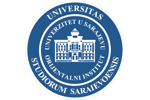An'ām of Abdullah Ibn Salih from the Gornji Vakuf: Synergy of Picture and Text in Devotional Practice
DOI:
https://doi.org/10.48116/issn.2303-8586.2022.72.234Keywords:
manuscripts, Bosnia, 18th century, text symbolism, painting, figurative graphicsAbstract
An'ām is the name for manuscript codices that contain selected surahs from the Qur’an, prayers, blessings, pictures, graphics and seals that symbolically connect their owner or reader with the God Almighty, the Prophet Muhammad and holy places and important figures of Islamic history. These codices were long thought to be intended for private and socially restricted devotional use. However, the practice of enshrining them in public institutions, especially mosques and tekkes, as well as the existence of a large number of manuscript copies, shows that anʻām were very present and were used in wider social circles.
In this paper, we will present the Anʻ'ām of Abdullah ibn Salih from Gornji Vakuf, stored in the manuscript collection of the Oriental Institute of the University of Sarajevo (OIS, R 86). By compiling selected religious texts and combining them with illustrations, Abdullah ibn Salih created a work that offers an insight into pious practices in Bosnia at the end of the 18th century and documented how the prayer texts were read, used and integrated into everyday life. Using a phenomenological approach in the analysis of Abdullah ibn Salih’s An'ām, we will point out the importance and role of text, representative images and graphics in the sacred context, and deal with their ritual use and the discovery of the hidden meanings of their empirical manifestation.



